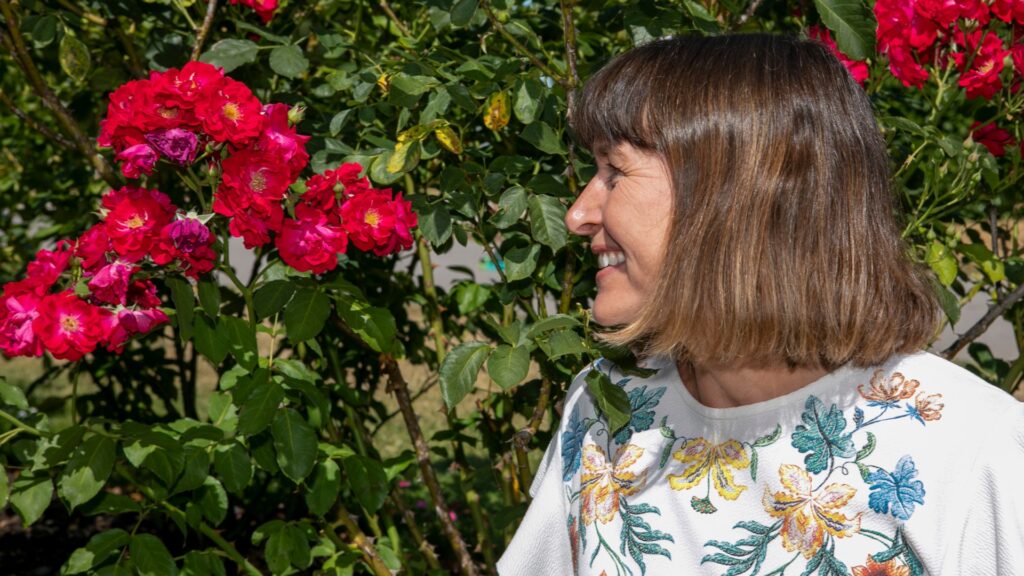
WE love a rose in the UK – and traditionally our gardens are stuffed full of beautiful blooms that have been bred for thousands of years.
But how frustrating is it when you spot the rose leaves going yellow and starting to fall – or the beautiful buds refuse to open and shrivel up instead?
Black spot is the nemesis of all rose-growers – a fungal disease that first appears as black spots on the roses’ leaves.
Then the leaf will start to yellow – and fall off – usually spreading further down the plant.
And although it doesn’t kill the rose – it can weaken it – making it susceptible to other pests and diseases.
Spores can overwinter on fallen leaves – and then infects the soil and then the plant next year.
Fight against it by making sure that all the fallen leaves are thrown away – not put on the compost.
And make sure the rose is pruned to allow enough air to move through the branches.
Although proper hard rose pruning is generally done in late winter or early Spring – a light prune now won’t be a problem.
Also – mulching over winter can help.
And make sure you’re watering the base rather than from the top of the leaves.
Give your rose a dose of proper liquid rose feed – Westland do a decent high performance liquid plant food which helps build resistance to disease. You can get it at Tesco for £8.99.
Or Temu is selling Doff Rose and Shrub Feed for £2.89 – which helps maintain healthy roses.
Finally – try and choose roses that are resistant to blackspot.
The general advice with roses is not to plant them in the same soil that a previous rose was in.
It can – in extreme cases – cause replant disease – which is where the rose will struggle to grow. You may even find it dies.
It’s because the roots won’t establish properly.
But the RHS recommends that you line the planting hole with a cardboard box with a hole in the bottom.
By the time the cardboard box has rotted into the soil, the roots will have established.
But if you’re fed up of black spot, powdery mildew and rose rosette diseases – then have you considered growing a wild rose instead?
They might not be quite as extravagant and blingy as the cultivated varieties – but wild roses – known as ‘Species Roses’ in the catalogues – do a very good job of growing without any human intervention at all.
In fact – they’re the roses that all our bred roses originated from – and almost thrive on neglect.
Charles Shi is in charge of the Wild Rose Garden at Kew – designed originally by Capability Brown in 1900.
As part of it’s restoration, he and his team travelled as far afield as China and Vietnam to bring back roses that are so new, they haven’t been named yet.
He told me: “One of the great things is whilst they flower for a short amount of time – wild roses make up for that by being very resistant to disease.
“Even if they get smothered in aphids they’re absolutely fine.
“They’re also more hardy. And the early flowers are followed by hips if they’re not deadheaded, which feed the birds over Winter.
“It’s so important to conserve them – as they could have medicinal compounds that could cure cancer – we’re discovering up to 100 compounds every year in our research – which are being used in medical trials.
“They also play a crucial role in ecological conservation by providing food and habitat for pollinators and wildlife.”
Some of Charles’ favourites include…
Rosa Soulieana – which he’s nicknamed The Sleeping Beauty Rose – as it’s like the one in the book that surrounds the castle. Smells of Cinnamon and up to 4m high.
Rosa hirtula – from the Hakone, Japan, at the foothills of Mt Fuji – The only rose with a tree-like habit, with beautiful spiky hips
Rosa x odorata ‘Mutabilis’ A bushy shrub, about 1.8m in height, with purplish young foliage and almost thornless stems
Rosa laevigata – has dinner-plate sized flowers.
Also in Veronica’s Column this week…

Top tips, news, plant of the week, competitions and more
PLANT OF THE WEEK Rosa ‘Gorgeous’ – a very easy to grow hybrid tea rose – with stunning pinky orange colour and strong fragrance – which when in full bloom almost looks like fire. Good for beds, borders and containers – and flowers from June to November.
WIN! Charles Bentley is giving away an Egg Shaped Swing Chair worth £149.99. To enter visit www.thesun.co.uk/CharlesBentley or write to Charles Bentley Competition, PO Box 3190, Colchester, Essex, CO2 8GP. Include your name, age, email or phone. UK residents 18+ only. Entries close 11.59pm. August 9, 2025. T&Cs apply
JOB OF THE WEEK Keep picking sweetpeas before the pods form, and pull out any trailing seed heads from Anamanthele (pheasants tail grass)_ so they don’t spread – it’s a very therapeutic job.
For more gardening content follow me @biros_and_bloom









